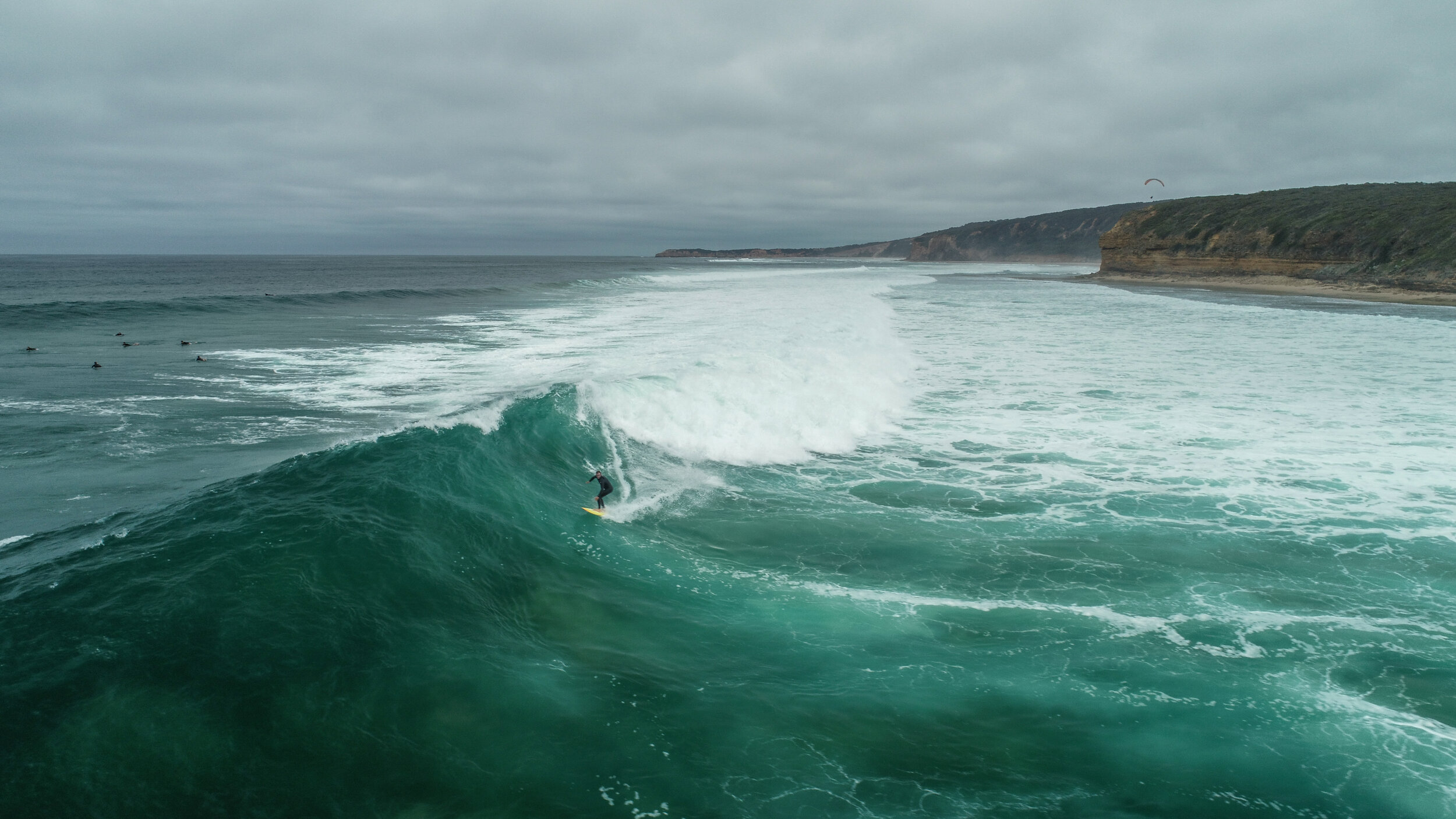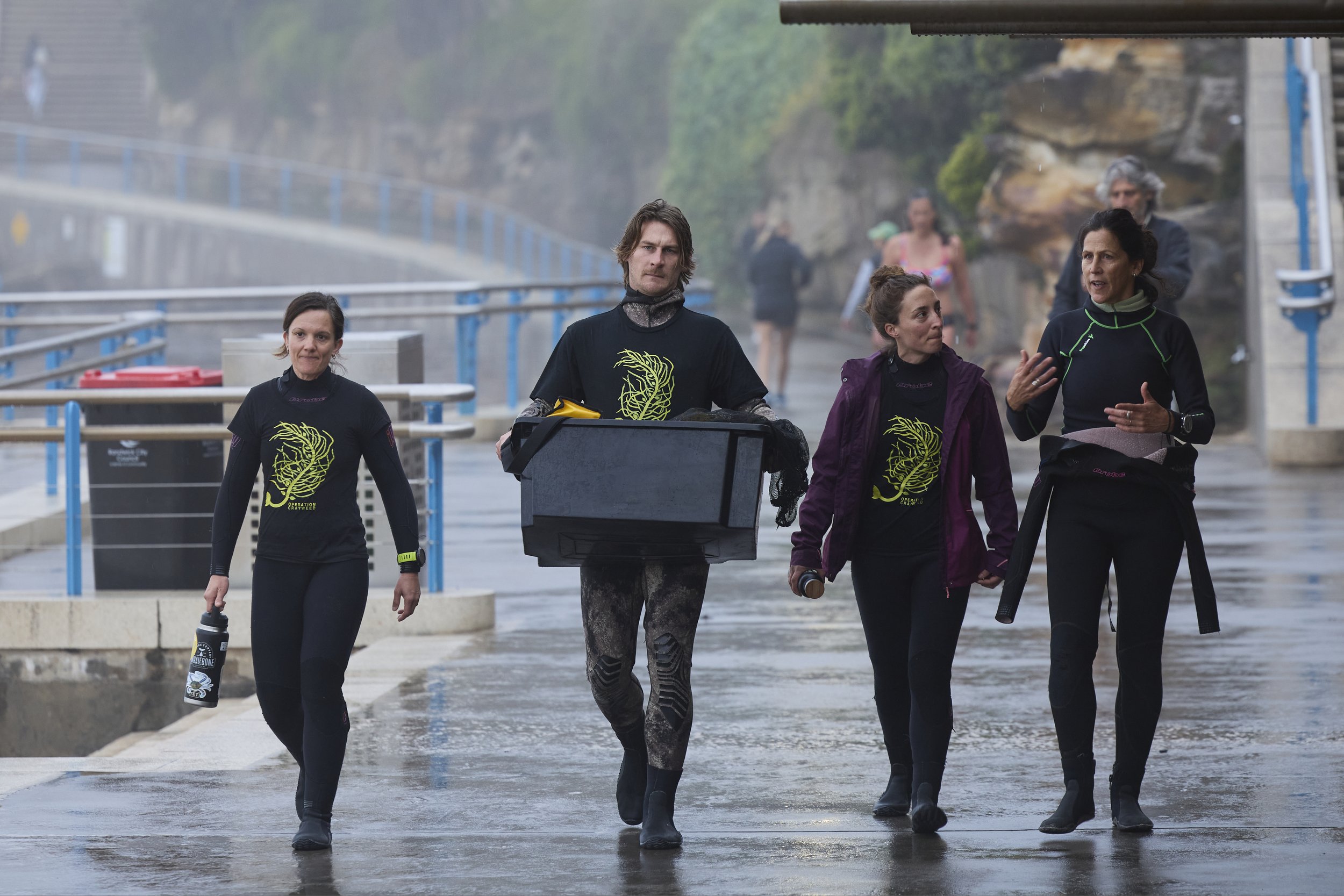Operation Crayweed
REwilding Sydney’s Underwater Forests
Operation Crayweed is an ambitious and pioneering research project aimed at restoring crayweed forests to Sydney’s reefs, where they once flourished.
These underwater ecosystems are critical for supporting marine biodiversity, providing habitat, food, and shelter for species like crayfish, abalone, and numerous fish.
Beyond restoration, the project also seeks to raise much-needed public awareness about the vital role seaweed forests play in maintaining coastal ecosystems and combating climate change.
Image: UNSW“Just like trees on land, seaweeds form vast underwater forests that underpin coastal food webs. They capture carbon from the atmosphere and produce oxygen, yet these vital ecosystems are in global decline due to human activities. This is what we’ve observed along Sydney’s beaches.”
- Professor Adriana Vergés, a lead scientist in the project.
What is crayweed?
Crayweed (Phyllospora comosa) is a large golden-hued seaweed. It gets its common name from the fact that it serves as a crucial habitat for crayfish (lobsters), providing shelter and food for these species as well as other marine life like abalone and various fish. Crayweed belongs to the Seirococcaceae family of brown algae (Phaeophyceae), a group characterised by their dense, bushy fronds and ability to form extensive underwater forests in shallow, sunlit waters.
Growing from the intertidal zone down to depths of around 20 metres, crayweed was once abundant along the coastline from Port Macquarie to Tasmania, creating vibrant underwater ecosystems that supported a wide range of species and contributed to the health and productivity of these marine environments.
Image: Tom BurdWhat Happened to Sydney’s CRayweed?
In the 1980s, crayweed mysteriously disappeared from the Sydney coastline, creating a dramatic decline in the habitats that supported many marine species. The likely culprit? Poorly treated sewage that was pumped directly onto Sydney's beaches and bays before the 1990s. While the introduction of deep ocean sewage outfalls drastically improved water quality, the crayweed forests did not naturally regenerate.
A Scientific Breakthrough in Restoration
Recognising the importance of these ecosystems, scientists at Operation Crayweed have pioneered a novel technique to restore these lost ecosystems. By carefully transplanting healthy, fertile crayweed from existing populations to deforested reefs, they have successfully initiated the re-establishment of these crucial seaweed forests.
The restoration process involves collecting crayweed from nearby coastlines and transporting it into Sydney reefs, where crayweed is attached to underwater rocks using a plastic mesh that is removed once the crayweed takes to the site. The transplantation process is stressful enough that it stimulates the crayweed to reproduce, and that is the key to create new self-sustaining populations.
Crayweed relies on sexual reproduction, and once transplanted,male and female individuals release gametes ands produce offspring that attaches permanently to the reef. This forms the foundation of a self-sustaining population, capable of expanding beyond the initial restoration site.
Image: Tom BurdWhat’s particularly remarkable is the project’s success in promoting natural dispersal. Scientists now observe crayweed babies, affectionately referred to as ‘craybies’ growing hundreds of metres away from the initial transplant sites, demonstrating the ability of these restored populations to expand and regenerate.
Image: UNSWRestoring Biodiversity & Ecosystem Health
The ultimate goal isn’t just to bring back crayweed, but to rejuvenate the entire ecosystem that depends on it. By restoring crayweed forests, marine life such as crayfish, abalone, and a diverse range of fish and microscopic invertebrates (epifauna) will likely return. This in turn helps to re-establish complex food webs and enhances biodiversity, which has far-reaching benefits for the marine environment.
The resurgence of these ecosystems is also a win for human communities. The return of crayweed forests benefits recreational activities like snorkelling, diving, and fishing, and has the potential to enhance local seafood industries, as crayfish and abalone populations recover.
Leaders in Restoration
Operation Crayweed’s success is a testament to the power of targeted restoration efforts. Transplanted crayweed populations are not only surviving but flourishing, with scientists recording robust growth and reproduction across multiple sites. This success demonstrates that ecosystems can indeed recover from decades of human-induced damage when given the right conditions and scientific interventions.
Image: UNSW“This species hasn’t been here for 30 years, and now it’s thriving again with lots of crayweed growing again in reefs north and south of Sydney Harbour —that’s incredibly rewarding.”
-PhD candidate Catalina Musrri, who has been collating data from the last 12 years on crayweed restoration efforts from and subsequent expansion as part of her thesis.
Operation Crayweed is co-led by marine ecologist Professor Adriana Vergés from UNSW and Associate Professor Ziggy Marzinelli from the University of Sydney, with both of them also affiliated to the Sydney Institute of Marine Science. These days the hands-on fieldwork and community engagement work is driven by the collective efforts of Dr Claudia Santori, Jack Vitnell and Dr Chanelle Webster.
Their dedication, alongside a team of co-founding researchers, collaborators, students, volunteers, and conservationists, has positioned Operation Crayweed as a model for marine restoration efforts globally. It underscores the potential for reversing environmental degradation and provides hope for the future of threatened ecosystems.
Image: UNSWOperation Crayweed serves as a powerful reminder that with science, community engagement, and sustained conservation efforts, we can rebuild ecosystems like Australia’s Great Southern Reef, ensuring their survival for generations to come.
Image: Tom BurdGet Involved
Operation Crayweed is a community-driven initiative, and there are numerous ways for the public to contribute to its success. People can get involved by participating in volunteer planting days, where they help transplant crayweed onto reefs alongside scientists. These events offer a hands-on opportunity to contribute directly to the restoration of Sydney’s underwater forests. Additionally, spreading awareness about the importance of crayweed and the broader Great Southern Reef through social media, local community groups, and schools can have a significant impact.
The project also encourages individuals to support marine conservation efforts by adopting sustainable practices, such as reducing plastic use, minimising pollution, and supporting responsible fishing and seafood consumption. For those looking to contribute financially, donations to Operation Crayweed help fund vital research and restoration efforts, ensuring the long-term success of this vital initiative. Together, these actions can make a tangible difference in the health of Sydney’s marine ecosystems.
Image: UNSW













